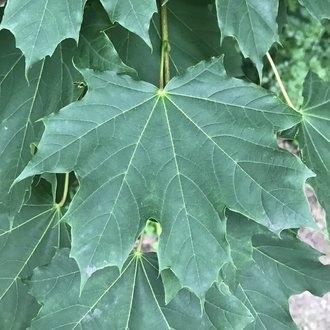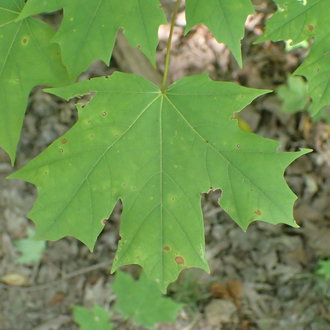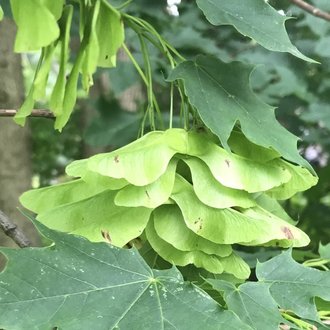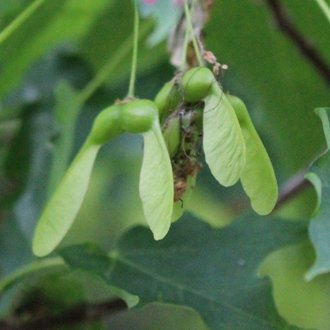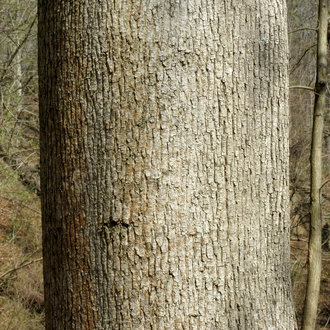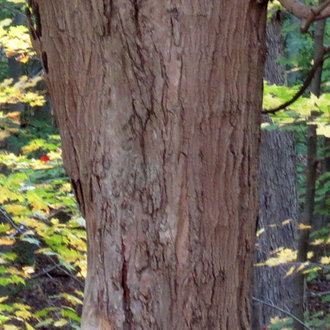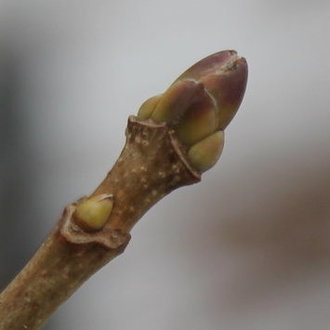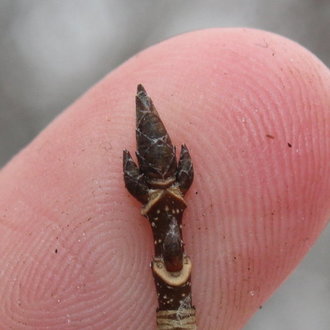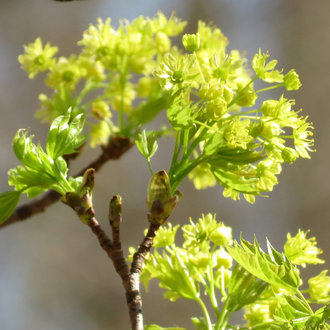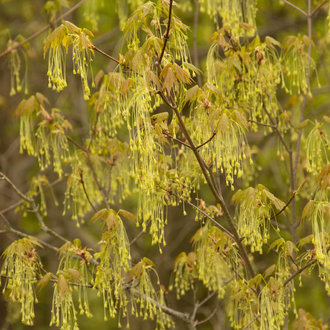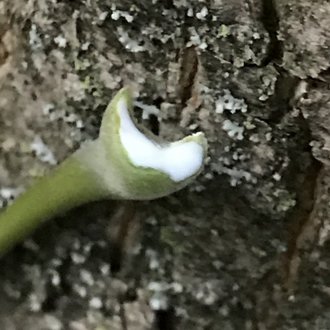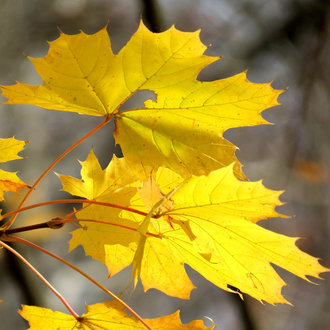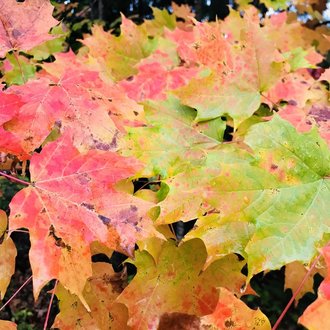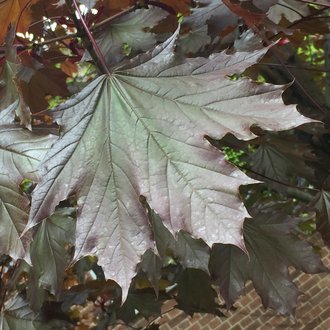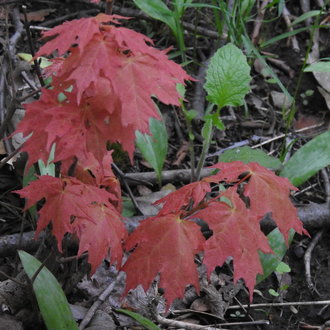Norway Maple vs Sugar Maple
These plants are often confused due to similarity in leaf shape and occurrence in the same habitat; they are easily distinguished by samaras, flowers, mature tree bark, buds, or the presence/absence of milky sap. Leaf shape can be distinguished, but is best supplemented by other cues. Although there is much overlap in habitat, Norway maple is found on a broader range of sites, including disturbed habitats, whereas sugar maple is more limited to rich, mesic sites.
Norway Maple (Acer platanoides) | Sugar Maple (Acer saccharum) |
A shade-tolerant tree native to Europe and Western Asia. Widely used as a landscape plant, and has become invasive in North America in the mid-Atlantic, Midwest, and Pacific Northwest. | A shade-tolerant deciduous tree of the northeast, often associated with climax communities on rich, mesic sites. |
Broader-based leaves 5-7-lobed. Side lobes usually extend as wide or wider than front 3 lobes. Front 3 lobes often wider at the base. Photo © Andrew Conboy, CC BY 4.0. | Leaves 5-lobed. Side lobes usually greatly diminished, much less wide than diagonal front-side lobes. Front 3 lobes often widen towards the tip. Photo © Yann Kemper, Public Domain. |
Samaras spread more horizontally when hanging. Seed very flat. Photo © Andrew Conboy, CC BY 4.0. | Samaras more downward-oriented when hanging. Seed round and not flat. Photo © Rob Foster, CC BY 4.0. |
Bark of mature trees has fine, regularly-spaced ridges. Photo © Katja Schulz, CC BY 4.0. | Bark variable, but more irregular on mature trees, often with larger, coarser ridges. Photo © Katja Schulz, CC BY 4.0. |
Terminal buds larger, reddish-brown, rounded or blunt-tipped, usually only 3-4 pairs of bud scales visible. Photo © Quinten Wiegersma, CC BY 4.0. | Terminal buds smaller, brown, sharply pointed, 4-8 pairs of bud scales visible. Photo © Quinten Wiegersma, CC BY 4.0. |
Flowers in upright, rounded clusters. Photo © Katja Schulz, CC BY 4.0. | Flowers in drooping clusters. Photo © Christine McAnlis, CC BY 4.0. |
Leaf stalks exude a milky sap if cut or plucked. Photo © Michael Ellis, CC BY 4.0. | Lacks milky sap. |
Autumn color usually yellow. Less often red. Leaves change color late and are often retained longer on tree. Photo © Katja Schulz, CC BY 4.0. | Autumn color variable but often includes oranges and reds. Usually starts changing color earlier. Photo © Tanja Miloti?, Public Domain. |
Purple-leaf cultivars are widely planted, which retain a dark purple color during the growing season. Their offspring may retain some purple-bronze color. Photo © miquelon, CC BY 4.0. | Leaves always green during growing season. Occasionally foliage will be reddish when leafing out. Photo © Joanne Redwood, Public Domain. |
References & External Resources
These short lists show only links helpful for ID. For a complete list of references and resources also covering other aspects of ecology, visit the links section of the full article on each plant, which is the first entry here.



